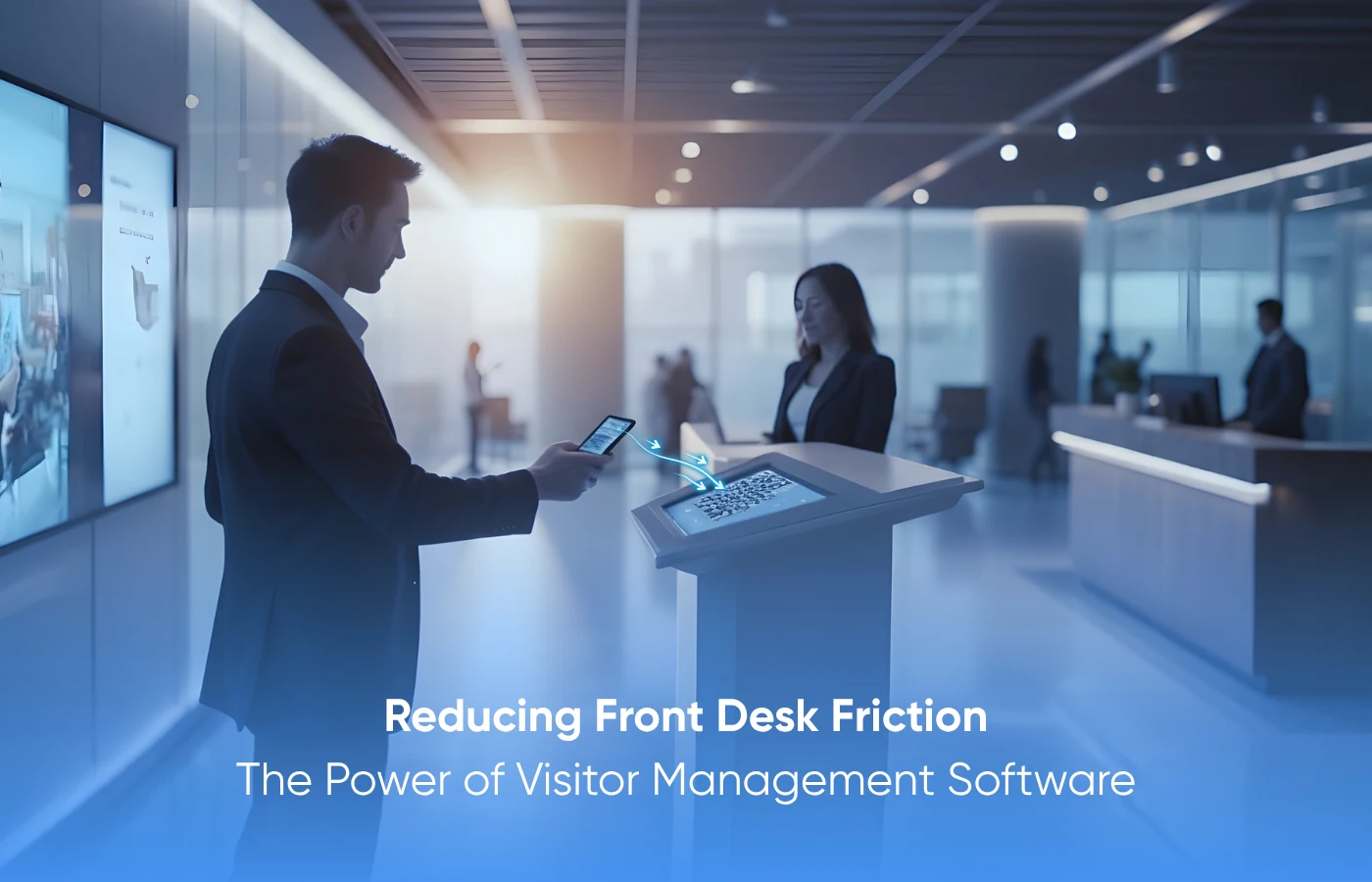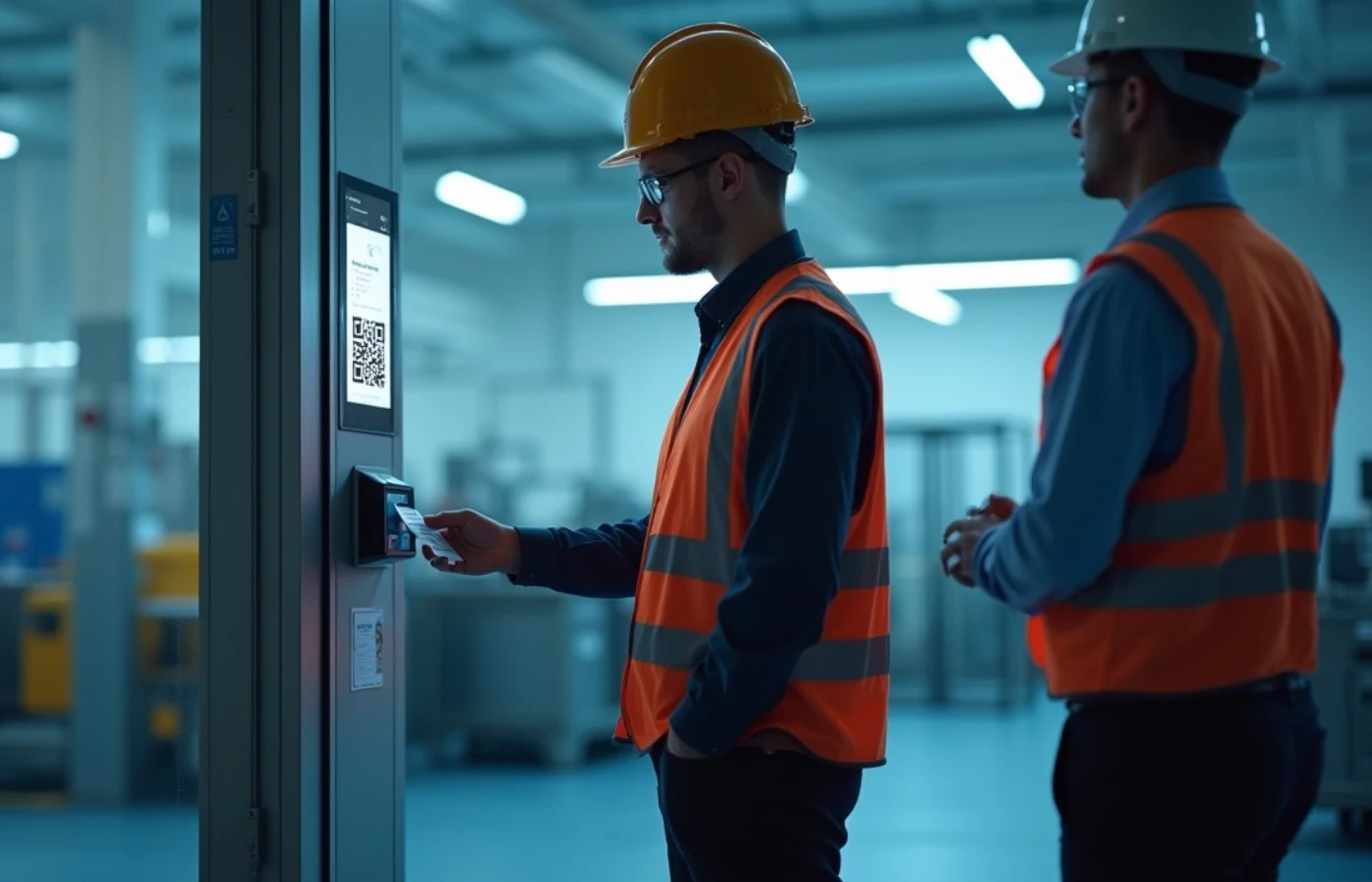Reducing Front Desk Friction: The Power of Visitor Management Software

Offices have become dynamic centers where employees, customers, contractors, and partners arrive and leave throughout the day. The first few minutes spent at the reception area determine how the visitor judges the organization for many visitors. Long lines, paperwork, or poor instructions usually frustrate. Behavioral studies suggest that uncertainty leads to a perception of longer waiting times, and the time spent waiting increases stress.
This is where Visitor Management Software comes into direct play. By automating check-ins with QR codes, tablets, and badge printing, it minimizes uncertainty, accelerates the process, and enhances security and guest experience. For organizations that weigh safety, compliance, and hospitality, this software redefines the waiting experience at the front desk.
The Front Desk as a Strategic Touchpoint
The front desk is not just a reception area, it is the company’s initial line of contact with the outside world. Each visitor, be it a client, contractor, or prospective employee, makes an impression in those first few minutes. An efficient and predictable procedure speaks volumes about efficiency and professionalism, while a tiring or prolonged affair leaves visitors disinterested.
In the modern flexible workplaces defined by hybrid schedules and increased visitor traffic, the value of this touchpoint has escalated considerably. Greeting visitors and handling them is no longer an operational chore, but a reflection of the organizational culture, values, and attention to detail.
Why Traditional Visitor Management Creates Friction
Manual logbooks and paper-based registration have been the default for decades, but they fail to address the psychology of waiting.
Common problems are:
1. Inaccuracy: Handwritten information is susceptible to error and misreading.
2. Delays: Guests tend to take too long filling out forms or waiting for verification.
3. Security gaps: Security is more accessible with paper systems.
4. Compliance risks: Records are difficult to audit and maintain securely.
In dynamic visitor traffic environments, such as hybrid workplaces and co-working spaces, these inefficiencies increase front desk stress and underscore the pressing need for Visitor Management Software.

Inside the Digital Visitor Journey
Visitor Management Software replaces outdated, manual processes with a seamless, digital-first approach that is easy for visitors and robust for organizations. The system guides guests through all phases of the experience, reducing risk and improving security in the process.
1. Pre-Registration: The guest receives an invitation link or QR code in the days leading up to the event. It eliminates all the guesswork and mystery on both sides, allowing the organization to be proactive and ensuring that the guest knows exactly what to expect.
2. Check-In at the Facility: Once guests arrive, they can simply scan the QR code or opt for a tablet kiosk check-in option to quickly and safely check in, avoiding long lines at reception while capturing data accurately and eliminating the need for paper-based forms.
3. Identification: Badges or passes are printed immediately with information such as name, photo, host, and authorized access zones. This creates visible identification and comforts visitors that they are part of an organized, professional process.
4. Digital Logs: Everything is securely stored in the cloud, providing a complete record of who entered, when, and where they were permitted to go. These are simple to pull for audits and compliance checks.
5. Departure: When visitors depart, they check out electronically, automatically updating occupancy accounts. It is beneficial during emergencies, providing facility managers with clear visibility of all people remaining within.
The Psychology of Waiting and Visitor Experience
The psychology of waiting emphasizes that individuals are more patient about waits when the process appears to be organized and interactive. Visitor Management Software takes advantage of this by:
1. Minimizing downtime: QR codes and kiosks provide something active for visitors to do rather than waiting idoly.
2. Establishing certainty: Pre-registration and automated processes eliminate ambiguity about the process.
3. Providing reassurance: Digital badges and hosting real-time notifications convey that the organization cares about both security and efficiency.
4. Establishing trust: Individualized kiosk and pass branding reinforces consistency and professionalism.
Through the treatment of these psychological influences, organizations establish an inviting experience that is perceived as shorter and less stressful for guests.
Why Organizations Choose Visitor Management Software
1. Easy Compliance
Industries such as healthcare, IT, and finance have stringent audit requirements. With Visitor Management Software, all check-ins and check-outs are logged digitally, leaving a tamper-proof, audit-ready record of visitors that can be accessed immediately for inspection or audit.
2. Actionable Analytics
Aside from security and compliance, visitor information is highly valuable. Managers can use peak times, recurring visitor types, or space usage trends to analyze. This intelligence gives organizations confidence in optimizing resources, staff, and space planning.
3. Professional First Impressions
During the first couple of minutes of a visitor’s experience, the visitor will have formed impressions that will affect the rest of the interaction with your organization. In addition, Visitor Management Software supports professionalism and the welcoming of guests by enabling technology-based engagement, allowing for seamless, branded, and technology-driven entry experiences.
Real-World Uses
1. Corporate offices: Large companies may utilize Visitor Management Software first to pre-register clients, issue QR codes, and immediately notify hosts to create a truly memorable experience for on-site guests.
2. Healthcare: Hospitals manage the volume of visitors using tablet-based visit systems and digital badges, which enable hospitals to keep patients safe, ensure compliance, and manage clinician and family escalations.
3. Educational Institutions: Schools and universities utilize Visitor systems to monitor campus access to schools, offer safety, and provide transparency of visits to parents and guardians.
4. Industrial Sites: Factories are adopting QR-based passes for contractors and suppliers, which limit access to designated areas and log every entry for accountability purposes.

The Future of Visitor Management Software
The next generation of Visitor Management Software will take the visitor journey beyond check-ins:
1. AI-Driven Insights: Predict visitor traffic and identify unusual patterns in real time.
2. Biometric Authentication: Facial recognition and fingerprint verification for high-security areas.
3. Mobile-First Access: Smartphone-based check-ins to reduce touchpoints and reliance on hardware.
4. Smart Building Integration: Linking visitor data with HVAC, lighting, and IoT systems for adaptive environments.
5. Sustainability: Paperless, eco-friendly solutions aligned with ESG goals.
These innovations position visitor management as a cornerstone of smart, secure, and visitor-friendly workplaces.
Conclusion:
FAQs:
1. What is Visitor Management Software?
A digital system that automates visitor check-ins, registrations, and tracking for secure, seamless entry.
2. How does it improve security?
It issues QR passes or badges, logs visitor data, and alerts teams of unauthorized access attempts.
3. Can visitors pre-register before arrival?
Yes. Guests can pre-register online and receive QR codes or passes for faster entry.
4. Is visitor data stored securely?
All data is stored in encrypted, cloud-based systems with audit-ready digital logs.
5. Can it integrate with other workplace systems?
Yes. It integrates with access control, IoT devices, and smart building systems.
6. Who uses Visitor Management Software?
Corporates, hospitals, schools, factories, and co-working spaces.
